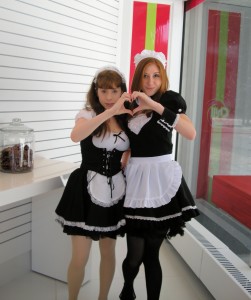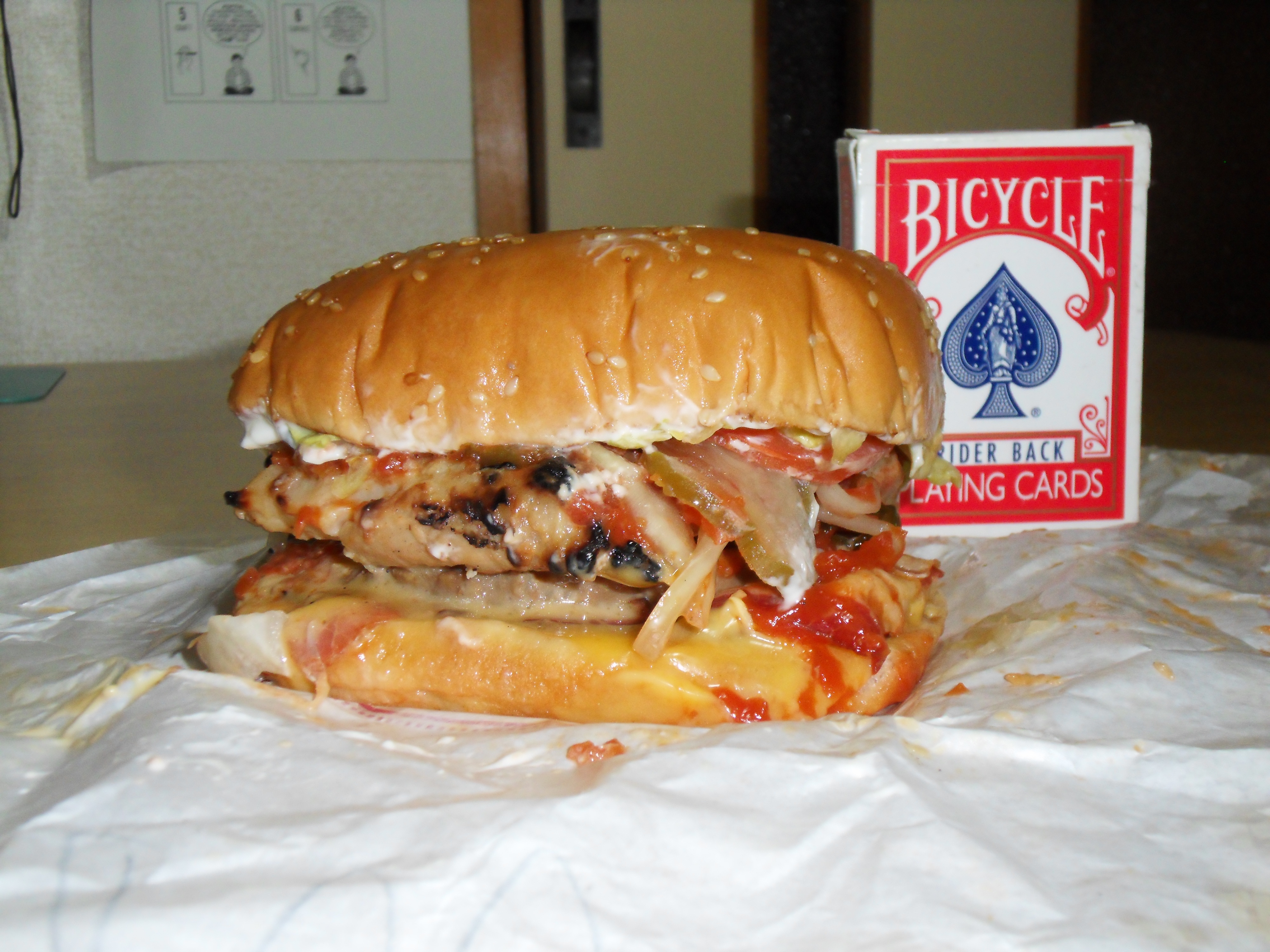Japan Fix London: Hyper Japan – Interview with Mary Moreton
Posted by Dipika Soni (Ishikawa-ken, 2003-06). Dipika has recently moved back to London as is currently looking for new work opportunities related to Japan, writing and translation.
——————————————————————————————————————————–
 It’s not surprising that London has changed a lot during the years I’ve been away in Japan. Being the “most populous municipality in the European Union”, rapid development, modernization and globalization are to be expected. However, it still throws me of guard when my British friends now drop ‘katsu-don’, ‘kirin beer’, and ‘kawaii’ into everyday conversation. I know those words weren’t part of my vocabulary before I took off for my life as an ALT!
It’s not surprising that London has changed a lot during the years I’ve been away in Japan. Being the “most populous municipality in the European Union”, rapid development, modernization and globalization are to be expected. However, it still throws me of guard when my British friends now drop ‘katsu-don’, ‘kirin beer’, and ‘kawaii’ into everyday conversation. I know those words weren’t part of my vocabulary before I took off for my life as an ALT!
For a recently returned expat like me, it is a huge comfort to see Japanese culture so widely embraced in my home city. Which is why I was particularly excited to hear about HYPER JAPAN, a three day event promoting all the different aspects of Japanese culture that make it so appealing to us in the west. Determined to get my ‘Japan-fix’ to fight off the homesickness, I applied for a volunteer position and was delighted to discover one of the Hyper Japan team, Mary Moreton, was a fellow ex-JET. Not one to miss a chance to share JET stories, Mary kindly agreed to meet me one soggy London afternoon.
 Hi Mary, sorry for dragging you out in this! Could you start by telling me a bit about your time on JET – why you applied, where you were based?
Hi Mary, sorry for dragging you out in this! Could you start by telling me a bit about your time on JET – why you applied, where you were based?
I was a CIR in Aomori City CIR from 2002 – 2005. I studied Classical Japanese Literature at University, which was a really interesting course that I enjoyed a lot, but not necessarily a degree that could lead straight to a clear career path. I wasn’t interested in working in say finance in the city like many of my friends, and I had spent time in Japan before (I did a year out in Osaka), so I decided to apply for JET.
How did you find Aomori compared to your experience of living in Osaka? I would imagine it to be quite different!
Yes, it was completely different to my previous experience of living in the city. I remember in my first week, there was another girl from UK who was based at the kencho, and we decided to meet up and explore one day. We walked around for about 10 minutes until we realised there really wasn’t much to see! It was totally different from my experiences of urban areas such as Tokyo, Osaka and Kobe.
What did you do after JET?
After returning from JET, my first job was as a PA for the European director of a Japanese electronics company where I was working in a mainly Japanese environment. Even though I had left Japan, during my working day, things weren’t too different. Although I felt that my unique point was my Japanese ability, I did not necessarily want to restrict myself to working for Japanese companies. I then went on to work for a British based Insurance broker. I worked in their Japanese department, so I was still using Japanese but not working in a completely Japanese environment as I had been used to. I had always been interested in translation, so in addition to working, I decided to do a part-time MA in translation. In the end I had to quit my job to focus on my dissertation in the last term.
With my MA finished I then decided to do freelance translation and signed up with several Japanese agencies. Not all of them gave regular work, and there were certain areas of translation (technical) that I couldn’t do, but after settling into a good relationship with a few coordinators, I managed to find my niche. Through that I did some work for the Sushi Awards, which led to my current position with Cross Media. Once again I am working as the only native English speaker in a Japanese company, but I enjoy it a lot as I get to promote all the things I love about Japanese culture and cuisine, and share it with a whole new audience.
Could you tell us a bit about the background of Hyper Japan?
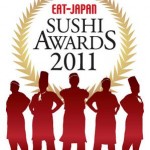 The Eat-Japan Sushi Awards have been around for a few years. Japanese food is a lot more popular now in the UK than when I left in 2002 to go to Japan. Now there are so many places around where you can try Japanese food, and there is a lot more scope to promote it – which is where the idea for the sushi awards came from.
The Eat-Japan Sushi Awards have been around for a few years. Japanese food is a lot more popular now in the UK than when I left in 2002 to go to Japan. Now there are so many places around where you can try Japanese food, and there is a lot more scope to promote it – which is where the idea for the sushi awards came from.
Japanese anime, manga and games have always had a fanbase in the UK and the rest of Europe, and there is a large Japan Expo held in Paris which mainly focuses on these aspects of Japanese culture.
I think most people think that Japan is cool, but not necessarily for just one thing. There are separate events to cater for cosplay, anime, and sushi fans, however there wasn’t anything that brought all these together – which what Hyper Japan attempts to do. In the same way that people who live in Japan experience the old and the modern co-existing harmoniously (you could find a Shinto shrine next door to a pachinko parlor), Hyper Japan aims to showcase both the contemporary and classic sides of Japanese culture under one roof.
To read the rest of the interview, click ‘Read More’.
Read More
Signs of a setsuden summer
Posted by Tom Baker (Chiba-ken, 1989-91), coauthor of The Sushi Lover’s Cookbook and Tokyo Chic and contributor to Time Out Tokyo and Time Out Shortlist Tokyo. He blogs as “Tokyo Tom Baker.”
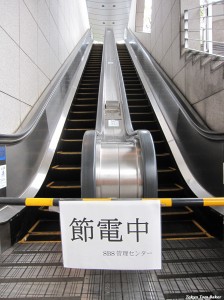 “Setsuden,” or conserving electricity, has become a huge buzzword in Japan as the weather heats up and many nuclear power plants remain shut down. Many businesses have put up signs explaining their own setsuden activities and asking the public to join in.
“Setsuden,” or conserving electricity, has become a huge buzzword in Japan as the weather heats up and many nuclear power plants remain shut down. Many businesses have put up signs explaining their own setsuden activities and asking the public to join in.
Recently I have been been photographing setsuden signs around the Tokyo area for my blog.
Some of the signs are very simple and functional, like the message seen here on a closed escalator at a train station, which simply says, “Setsuden-chuu.”
Others are clever pieces of writing and/or graphic design.
I have a gallery of signs here, as well as explanations of my picks for the best-designed sign here and the best slogan here.
MEF Bruce Rutledge article on CNN: Japan’s post-quake kawaii cute movement
**********
MEF Bruce Rutledge, founder of Seattle-based independent book publisher Chin Music Press and editor of Ibuki magazine, has an article on CNN GO titled:
“Japan’s post-quake kawaii cute movement: Harajuku’s colorful street-styles used to combat the quake crisis.”
Japan Times: U.S. students invited in memory of JET victims
Via Japan Times/Kyodo News Service, June 1, 2011:
U.S. students invited in memory of JET victims
Kyodo
Japan will invite 32 U.S. high school students who are studying Japanese to take part in a program in July to study the language and culture in memory of two American teachers killed in the March 11 earthquake and tsunami.
Foreign Minister Takeaki Matsumoto, during a speech at a symposium in Tokyo on Monday, referred to the program intended to nurture people who will serve as a bridge between Japan and the United States in the future.
The program is in commemoration of Taylor Anderson, 24, and Montgomery Dickson, 26, who were taking part in the Japan Exchange and Teaching Program.
Anderson of Virginia was found dead in Ishinomaki, Miyagi Prefecture, and Dickson of Alaska was found dead in Rikuzentakata, Iwate Prefecture.
According to the government-linked Japan Foundation, the organizer of the program, the 32 students selected from about 250 applicants in the United States will attend Japanese-language lessons, take part in cultural events, including a drum performance and wearing kimono, and have exchanges with high school students in Osaka.
They will stay at the homes of the Osaka high school students during the two-week program. It will run for five years starting this year, the Japan Foundation said.
Video: Anti-nuclear protest march in Tokyo – by JET alum Tom Baker
The meltdown crisis at the tsunami-hit nuclear power plant in Fukushima Prefecture has inspired a number of antinuclear protests in Japan. Journalist and JET alum Tom Baker (Chiba, 1989-1991), who blogs at Tokyo Tom Baker made this video of one that took place in Ginza, Tokyo, last night (May 27):
Hibari-sensei: Interview with Neko Neko Maid and Host Club
Jen Wang (Miyagi, 2008-09) is a lab tech in Dallas and a staff writer for the Japanese music website Purple SKY. Her love of cosplay and her junior high school students inspired the name for her own Japanese pop culture blog, Hibari-sensei’s Classroom.
Neko Neko Maid and Host Club (originally the Neko Neko Maid and Hostess Club) is a traveling maid troupe that makes appearances at anime conventions across the country. Unlike most anime con maid cafes, which consist of cosplayers serving food, Neko Neko brings the interactive experience integral to Akihabara maid culture to its guests. The girls (and guys) make small talk and play games with guests and sing and dance to J-pop songs.
The club is ready to kick off its 2011 tour with an appearance at Comicpalooza in Houston, Texas this weekend. Then they will be at Dallas’ anime convention, A-kon, from June 10-12. I was introduced to Neko Neko at last year’s A-kon, and I had a chance to sit down with one of its founders and maid leader Kitti Maherin and maid assistant Minami to learn more about the club.
How did Neko Neko get started?
Kitti: We formed on July 4, 2009. It started as four girls who enjoy maid cafes. When I went to Japan, I fell in love with the maid café I visited in Akihabara.
What made you decide to focus on the performance aspect rather than serving food in cosplay like other maid cafes at conventions?
Kitti: I enjoy performing, and it was a low cost option.
Who decides on the music you dance and sing to?
Kitti: The maid leaders and assistants choose the music. Miki, our choreographer and another founder, has a lot of input.
How long do you practice your dances?
Minami: It depends on the dance.
Kitti: I practice every day.
To read the rest of the interview, click here.
Smile Kids Japan’s Mike Maher-King speaks at TEDxTokyo
Mike Maher-King (Fukui), founder of Smile Kids Japan, recently spoke at TEDxTokyo: Entering the Unknown on Saturday, May 21 at Miraikan Tokyo.
Here are the English and Japanese videos of Mike’s talk which is titled “Against All Odds” in which he talks about Smile Kids Japan, how he came to start it, how the JET experience and community factored in and SKJ’s involvement in earthquake relief efforts.
Smile Kids Japan’s Mike Maher-King to speak at TEDxTokyo
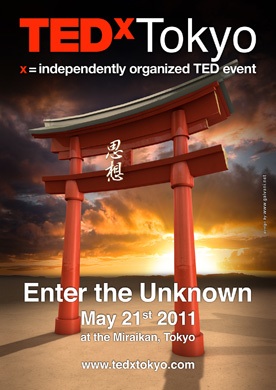 Mike Maher-King (Fukui), founder of Smile Kids Japan, will be one of the speakers at TEDxTokyo: Entering the Unknown on Saturday, May 21 at Miraikan Tokyo.
Mike Maher-King (Fukui), founder of Smile Kids Japan, will be one of the speakers at TEDxTokyo: Entering the Unknown on Saturday, May 21 at Miraikan Tokyo.
Here’s some background on Mike from the TEDxTokyo website which does a nice job summarizing some of the good work he’s been doing since the Tohoku Earthquake/Tsunami:
Mike Maher-King
Network Organizer, Fundraiser and CatalystChanneling good intentions is tougher than it looks, but Michael Maher King seems to possess the knack. The young British founder and CEO of Smile Kids Japan—which has now joined Living Dreams—was a teacher in Fukui when his wife informed him that some of their students were orphans. In May 2008, they started up Smile Kids to lend their time, skills and care to Fukui’s orphanages.
The March 11 Tohoku disaster broadened the group’s focus and ambitions. Working alongside the Living Dreams NPO, Michael is now taking their network concept to 18 orphanages in Miyagi, Iwate and Fukushima through the Smiles and Dreams: Tohoku Kids’ Project. They plan to set up regular fun and interactive volunteer visits, distribute donated items, and spark long-term projects that cover everything from computers to mentoring to scholarships. Michael hopes to go nationwide and help Japan’s other orphans shape their own destinies.
 And here’s the event description from the TEDxTokyo website:
And here’s the event description from the TEDxTokyo website:
Join us
The entire event will be streamed live here on:
- May 21st from 9am JST
- May 20th from 8pm EDT
Join us for all of the talks as they happen, and exclusive backstage interviews.
On Saturday May 21st from 9am JST (Friday May 20th from 8pm EDT) the curtain will rise on our third annual event, Entering the Unknown, which is set to be bigger and better than ever as we bring together an even wider range of speakers and participants to share ideas and inspiration.
In the wake of the devastating March 11th earthquake and subsequent tsunami & radiation menace, we abruptly altered our focus to explore practical and inventive ways of rebuilding and renewing Japan, and uplifting the spirits of its people.
Over 30 speakers and 300 participants will be joining us at Tokyo’s iconic Miraikan, with thousands more around the world watching on the day via our bilingual live streams, whilst taking part through our social media channels.
We invite you to be a part of this special event – put the date in your diary, follow our latest updates on Twitter, and join us here live from Tokyo on the day as we Enter the Unknown.
Jobs: LinkedIn Japan – Product Manager, Design, Engineering and more
Thanks to former JETwit job poster Machiko Yasuda for sharing this interesting listing of jobs which she saw posted on Joi Ito’s blog:
As many of you know, I’ve been working closely with Reid Hoffman for years now and one of the things that I’ve been working with Reid on from the beginning was thinking about LinkedIn, especially in the context of Japan.
As LinkedIn begins its global expansion, Japan is an important priority and recently I’ve been advising LinkedIn on a more formal basis.
Japan REALLY needs LinkedIn right now. LinkedIn is NOT a social network; it is a professional network. It is a network that allows people to build their professional identity, share business expertise and information, and advance your professional knowledge about subjects important to you. As privacy issues exceedingly become a concern, it’s very important to keep your casual, gaming and social networks separated from your professional network. I think LinkedIn will be an essential tool for professionals in Japan as it is in the rest of the world.
So, this is my last “real job” before I transition over completely to the Media Lab role: helping to launch LinkedIn in Japan. And we’re looking for the best talent out there. We need an awesome, dedicated team to run LinkedIn in Japan. This team will be responsible for the strategy, product roadmap, and growth in Japan – this the chance to be highly entrepreneurial while having the strength of a global brand behind your team.
We’re Hiring!
We’re looking for a variety of roles, and they are listed below. We are particularly looking for product and management leaders who want to take on this chance to manage user growth. LinkedIn is serious about Japan and this team would be working directly with a high-quality senior team in the US. I think it’s a great career opportunity.
If you think you are a fit for for any of the roles we list below (or know someone who is), please apply for the role through the link below or email CPorter@linkedin.com. Please include your resume and/or a link to your LinkedIn profile.
These roles are currently posted regarding our growth in Japan:
We are also interested in general management and product marketing candidates.
I’ll be blogging more about LinkedIn in Japan as we get closer to launching the Japanese product, but I wanted to get the word out that LinkedIn is planning to come to Japan in 2011, and we’re hiring. Help me put together the dream team.
Burger King Japan’s “Meat Monster” reviewed by JET writer for Esquire Magazine
Current Mie JET Patrick St. Michel shared the below about his recent “Meat Monster” review in Esquire Magazine, which JETwit believes is very much worth your time to read.
An Unexpected Burger Benefit of Life in Japan
Posted by Patrick St. Michel (Mie-ken, 2009-present).
Having now lived in Japan for nearly two years, I’ve discovered a host of benefits—from convenient public transportation to a copious amount of vending machines—that come with residing in this island nation. Recently, however, I encountered a completely unexpected benefit—one that involved consuming—in a single sitting—the FDA-recommended caloric intake for a herd of plus-size elephants.
Prior to joining JET, I attended—and graduated from—Northwestern University’s Medill School of Journalism. My pre-JET life also included working at three newspapers, an online music site, and an online magazine that I co-founded (http://www.northbynorthwestern.com). One of the friends I made along the way now works at Esquire magazine. Word had apparently spread stateside that Burger King Japan was launching a medically ill-advised burger aptly dubbed the “Meat Monster.” Knowing that I live in Japan and generally don’t give much thought to my arteries’ continuing ability to function, my friend asked if I would write a review of the Meat Monster for Esquire. Fortunately, I had inadvertently prepped for this unexpected assignment, having just reviewed McDonald’s “Mega Teriyaki” in my blog about life in Japan—http://www.japantrick.wordpress.com/. (I’ve also previously reviewed McDonald’s line of Big America burgers)
Some 1,160 calories and 2,290 milligrams of sodium later, I filed my Esquire story—http://www.esquire.com/blogs/food-for-men/burger-king-meat-monster-042611
As a postscript, my plan is to pursue a post-JET writing career in Japan. Toward that end, if anyone has suggestions—or knows of openings at traditional or online publications or public relations/marketing positions—I would love to hear from you! Reach me at mailto:patrickstmichel@gmail.com. If you’re still not sure about me, learn more at http://www.patrickstmichel.com, and if you’re interested in the Japanese music scene, follow my blog—http://www.makebelievemelodies.wordpress.com/.
Better than Skype: Japan invents new kissing device that lets you make out over the Internet
Researchers in Japan have invented a way to kiss over the Internet. I worked hard to think of a JET angle to make this story JETwit-worthy. And it finally hit me that it might be extremely helpful to JETs and JET alums involved in long-distance relationships! (Not bad, deshou?)
Here’s the video:
Japan Center for International Exchange (JCIE/USA) Update 04.28.11
The Japan Center for International Exchange (JCIE/USA) has been an excellent source of updates via the earthquake section of its website as well as its Facebook page. The kind of info you’re likely not getting from CNN or network news. Notably, JET alum James Gannon (Ehime-ken, 1992-94) is the Executive Director of JCIE/USA’s New York office. Here’s the latest update:
4/28 Update: http://www.jcie.org/earthquakeupdate.html
* Peace Winds Japan helps chambers of commerce to get up and running as an important recovery step.
* Another PWJ initiative, the free “Compassion Bus”, takes evacuees to supermarkets in Ofunato and others.
* Association for Aid and Relief also offers transportation services to those on the Oshika Peninsula, which sustained enormous damage to its roads.
4/26-27 Update: http://www.jcie.org/earthquakeupdate.html
* The Japan Association for Refugees (JAR) began offering legal consultations; evacuees have many concerns from lost family, businesses and even the mortgages on homes that were swept away.
* NICCO experts find that functioning batteries from cars that were destroyed can be used to power LED lights, which can then be hooked up to solar panels for all day use.
Foreign correspondents start “No. 1 Shimbun” to cover Tohoku disaster
Thanks to JET alum Emily Metzgar, Assistant Professor at Indiana University’s School of Journalism, for sharing the link to the new publication No. 1 Shimbun, published by leading foreign correspondents in Japan.
CLICK HERE for the April 2011 Special Issue.
There’s a very thoughtful article titled “This is what public diplomacy looks like“ by JET alum Emily Metzgar, Assistant Professor at Indiana University’s School of Journalism, on the Center for Public Diplomacy blog (which is part of the University of Southern California’s Annenberg School of Communications). (This is the same Emily Metzgar conducting the Survey of American Alumni of the JET Program.)
Here’s an excerpt that captures the gist of the piece, namely that JET is providing Japan with a significant “return on JET-vestment“:
“But in the aftermath of Japan’s devastating earthquake and tsunami, the value of having a large, worldwide network of college-educated foreigners who understand, respect and appreciate Japanese society and culture continues to emerge. A look at a JET alumni networking website, JETwit.com, provides ample evidence of the many ways in which current and former JETs are responding in whatever ways they can to the disaster hitting a country that all of them, at one time or another, have called home.”
CLICK HERE to read the full article.
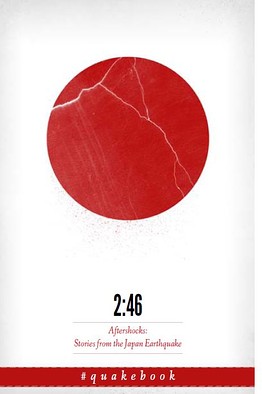 Fukushima City JET Brent Stirling recently put out word to JETAA chapters about Quakebook, “a book of stories, art and photographs that reflected first person accounts of the disaster” which will soon be available on Amazon.com with all proceeds going to benefit the Japan Red Cross. Brent contributed his own story and has also offered to help with marketing and spreading the word. Below Brent provides some insight into the unique process that led to the creation of of the project as well as his own involvement.
Fukushima City JET Brent Stirling recently put out word to JETAA chapters about Quakebook, “a book of stories, art and photographs that reflected first person accounts of the disaster” which will soon be available on Amazon.com with all proceeds going to benefit the Japan Red Cross. Brent contributed his own story and has also offered to help with marketing and spreading the word. Below Brent provides some insight into the unique process that led to the creation of of the project as well as his own involvement.
I lived in Fukushima City from August 2006 to August 2010 and worked as an ALT there. The recent earthquake, tsunami and nuclear crisis in Tohoku has had me glued to my computer since it began, as has probably been the case with all JET Alumni. Keeping in contact with my friends in Fukushima-ken through Facebook and Twitter, I felt helpless as far as how to help and what to do.
With limited access to news in the first days after the quake, I compiled information from friend’s Facebook status updates, Twitter and a variety of news sources. I sent these updates via Facebook to my friends who didn’t have the time to comb through the news in order to get an accurate picture of what was going on. Updates included news about transportation, gas, areas with running water, wind directions, reactor conditions and radiation levels. Facebook became a source of news for everyone in the prefecture. The current and former Fukushima JET community along with Japanese people worked together in order to get a clear picture of what was going on in Fukushima.
A week after the earthquake, I was sent a link to a blog asking for contributions about the earthquake. The blogger, OurManInAbiko, hoped to create a book of stories, art and photographs that reflected first person accounts of the disaster. He vowed to edit all the submissions and donate all of the proceeds to the Japanese Red Cross. Looking to help anyway I could, I put in a submission about my experience in Canada throughout the ordeal and how proud the JETs and Japanese community had made me throughout the crisis. My submission discusses sensationalism in the media and how the JET community worked together using social media to overcome adversity and share accurate news on the situation as it unfolded. I didn’t know that within 15 hours, OurManInAbiko had received 74 eyewitness submissions from all over Japan, as well as reactions from elsewhere in Asia, Europe and North America.
Through Twitter, the idea of #Quakebook grew. Just as the Fukushima-ken JETs had used social networks in order to keep in contact, #Quakebook was using the networks in order to promote and create a book. People joined in to spread the word and help with the logistics of publishing a book of this magnitude in such a short span of time. Soon after, writer, William Gibson wrote a piece for the book, then Jake Adelstein contributed, Yoko Ono has recently come on board, offering her own piece in Japanese and English Through the work of so many on Twitter from all over the world, #Quakebook began to take off. Articles appeared on the BBC website, the Wall Street Journal and CNN Go to name a few. Amazon has agreed to publish the book, waiving all of their fees with 100% of the money going to the Japanese Red Cross. The all-volunteer team of #Quakebook is now working at getting translations of the book into different languages so that it can be a truly worldwide phenomenon.
The group that comprises the Quakebook team is continually growing. Every person involved is using their skills and their own contacts in order to get the word out to every corner of the globe. The team, while working closely is completely anonymous as everyone is referred to by their Twitter names. My role has been very small throughout the Quakebook marketing process, but I believe in the book and I think it has the potential to bring people who are otherwise removed from the situation in Japan closer to it. In buying the book, not only are people making a donation to the Japanese Red Cross, but they’re also getting the stories of the people involved, the people that this disaster has affected.
I know that all JET Alumni are tied to Japan the same way that I am. Everyone’s time in Japan had a profound affect on where they are now and what they’ve done with their lives. I’m hoping that this connection to Japan will get JET Alumni Associations worldwide to support and promote this book as best they can. By putting a link to the Quakebook website on your blog, printing Quakebook posters for around your neighbourhood or your local library or getting it into the media wherever you are, everyone can make a difference in this project and help with the relief efforts in Japan.
- Pre-order the book at www.quakebook.org
- Excerpts from Quakebook
- Brent’s re-work of his submission


